Holistic Occupational Therapy

Although occupational therapy is already holistic in nature, holistic occupational therapy refers to the integration of holistic practices including complementary and alternative medicines, prevention and wellness approaches.
Boundless Breath practitioners have a holistic perspective. Trained in psychology, philosophy, biology, and metaphysics, we examine the mind-body-spirit connection, and target the root cause of concern that may be impacting a client’s occupational performance. The services provided are client-centered and address the entire person including their physical, emotional, mental, and spiritual well-being. We understand that meaningful activities support an individual’s participation, performance and quality of life, and embracing the uniqueness of each clients’ circumstances only enhances their recovery (i.e., ADLs, IADLs, rest, sleep, education, work, play, leisure, and social participation).
Who Can Benefit from Holistic Occupational Therapy?
Persons of all ages who experience physical, developmental, cognitive or emotional difficulties can benefit from occupational therapy.
Furthermore, Boundless Breath believes that “prevention is better than a cure” and works with healthy populations to promote quality of life by maximizing a person’s understanding of health and wellness. Occupational therapy promotes strength, coordination and function for individuals with:
- Rehabilitation and Neuro re-education following stroke (CVA)
- Cancer rehabilitation
- Fractures and soft tissue injuries
- Recovery following surgery
- Cardiopulmonary dysfunction
- Neurological Disorders
- Cerebral palsy
- Down syndrome
- Spina bifida
- Psychological disorders
Depression, anxiety, trauma -related disorders (PTSD), and substance abuse
Integrating holistic therapies has been proven successful in influencing a client’s overall health and well-being. Research shows they can improve healing, recovery, and prevent disease. Check out Boundless Breath’s blog to learn of the various benefits of receiving holistic OT. Research continues to demonstrate the efficacy of the following holistic approaches that Boundless Breath implements and are gaining popularity.
• Meditation and Relaxation Techniques
• Yogic Practices
• Hyppotherapy/ Equine Therapy
• Body Work/Manual Therapy
• Sound Healing
• Aromatherapy
• Health & Wellness Coaching
• Nutritional Counseling
Coming Soon: Acupuncture!

Intervention Approaches
Education
Functional Goal Setting
Home Exercise Program
Screening for Additional Referrals
Informing clients about their pain, prognosis and clarifying treatment expectations and the self-management approach, prepares them for active participation in the rehabilitation process.
Clients are involved in identifying and setting goals for their own therapy. This process supports client motivation and participation while improving therapy outcomes.
Self-management includes actively maintaining a healthy lifestyle, including home exercise programs. These programs are specifically tailored to meet the needs of individual clients and include physical movement, personalized stretches and modalities to manage muscle imbalances, joint inflammation and pain.
Physical ailments can be accompanied by psychological, cognitive, and emotional difficulties. When appropriate, therapists may refer clients for additional services to facilitate best practice and optimal therapy outcomes.
Training
- Safe Body Mechanics and Ergonomics: Clients often become fearful of pain with movement following an injury, and subsequently avoid activities. Instruction in safe body mechanics, with opportunities to practice and receive feedback, promotes feelings of self-efficacy. Clients learn to safely perform basic activities of daily living, work, leisure, social, and community activities using techniques that reduce or prevent strain on body structures. Ergonomic assessments identify environmental factors that may be contributing to pain problems and that can be modified to improve function.
- Neuromuscular Re-education: Injury can lead to abnormal movement patterns and postural deviations. We retrain clients to perform tasks with the appropriate muscle groups using adjunctive modalities, such as electromyographic biofeedback, to prepare them to participate in valued activities. Neuromuscular re-education focuses on improving the strength, timing, coordination and force production of muscles affected by injury.
- Muscle Tension Reduction Training: Muscle tension is a stressor on the body and mind. Learning to relax muscles and calm the mind allows the client to feel in control of his or her body while reducing pain levels, and muscle tone particularly following a stroke.
- Proactive Problem Solving: Previously avoided activities may be accomplished when clients are taught to be proactive problem solvers. This process involves anticipating potential problems and planning for challenges ahead of time.
- Modifying and Pacing Activities: We teach clients to pace their activities, such as taking breaks, changing the way an activity is done, or asking for help, as effective coping strategies.
Dr. Heaven Marculis OTD, OTR/L is available for free phone consultations to answer questions on how to get started. Tell her your concerns and how she can help by filling out a short contact form.
